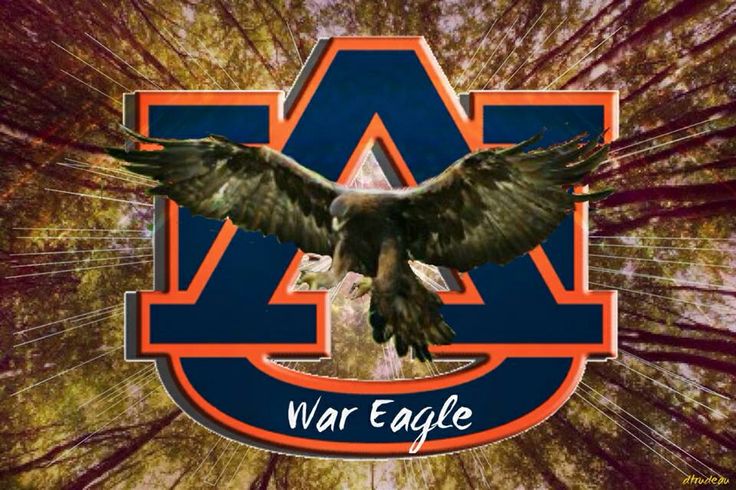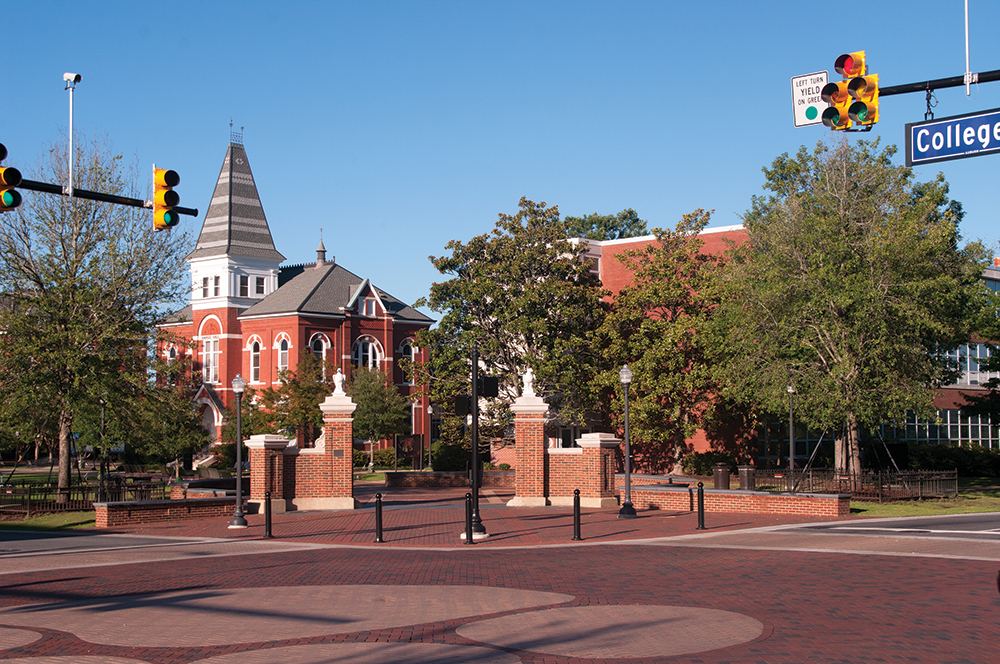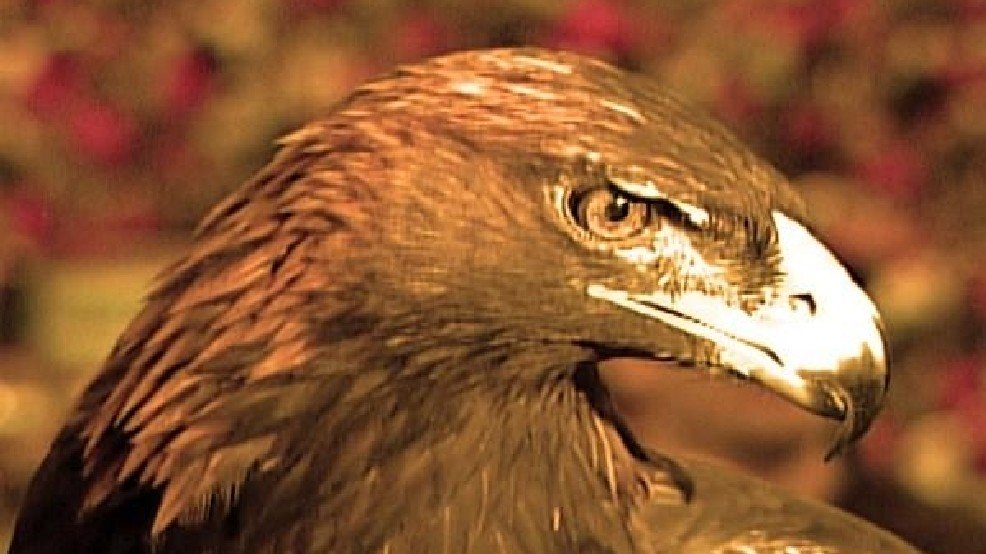Fertilizer Exists Today Because of Cullars Rotation
The Cullars Rotation is a soil fertility experiment that is located on the campus of Auburn University, in Auburn Alabama.
First started in the year 1911, it is the oldest ongoing fertility experiment of growing cotton and other crops in the United States, and the second oldest in the world.
It is also the oldest overall soil fertility experiment in the South.
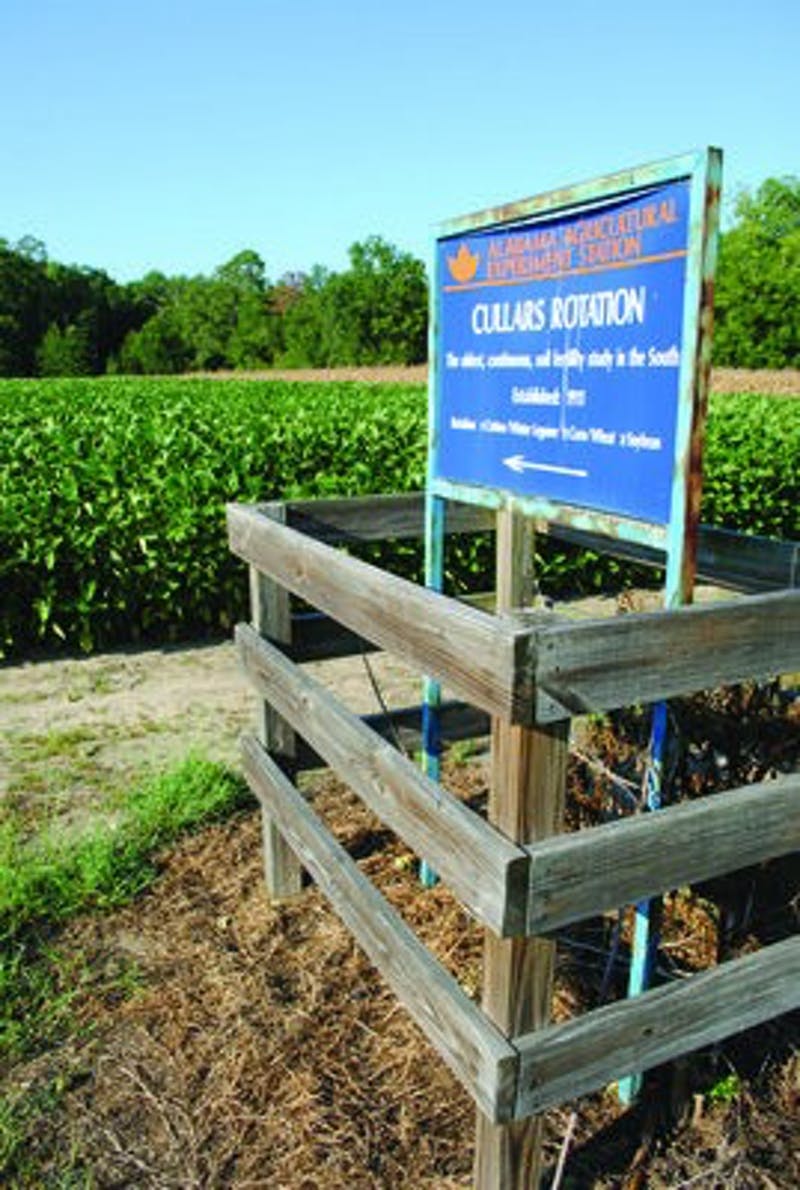 Cullars Rotation Test Field
Cullars Rotation Test FieldThe History of Cullars Rotation
It is located at the corner of College Street and Woodfield Drive in Auburn, and while it is not open to the public, it can be viewed from the museum grounds.
It was placed on the National Register of Historic Places in May of 2003.
It is named after J. A. Cullars who, along with his brother-in-law J.P. Avis, began to farmland in this area in the late 1880’s.
It was originally started in 1911 by the Alabama Agricultural Experiment Station.
The first of the early records indicate that the founders allowed a biology professor named George F. Atkinson and his associates, to conduct experiments.
At the time, the Institution was known as the Agricultural and Mechanical College of Alabama, which is now the University of Auburn.
Professor Atkinson research at what is now called Cullars Rotation, led to what is referred to as “Cotton Rust”.
“Cotton Rust” is a deficiency of potassium in the soil, and his discovery led to the development of fertilizer in the southern part of the United States.
In the year 1911, the Alabama legislature found the experiments to be so successful, that they set aside money for more experiments.
These additional experiments had one objective in mind; to study the long term effects on the fertilization of not only cotton, but corn, wheat, and soybeans.
These tests were to be run-on three-year cycles, and the Cullars Rotation was the site chosen for these tests.
They were again extremely successful and have been continually ongoing since.
These ongoing experiments have been established to determine how much potassium, as well as other nutrients, is actually needed to maintain high yield crop production.
This vital information gathered from the Cullars Rotation, has been used to support the recommendations for fertilizer ingredients for the various crops.
There have been 14 different sets of three soil treatments over the years, and here are the first 7.
The First 7 Soil Treatments at Cullars Rotation
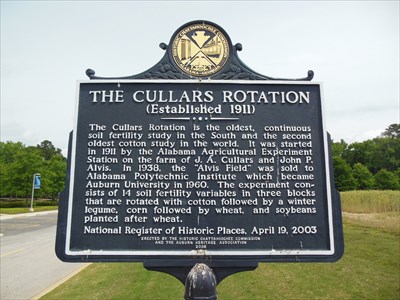 The Cullars Rotation Sign
The Cullars Rotation Sign- Legumes were planted, but there was no nitrogen fertilizer given
- No Legumes and no nitrogen fertilizer added to the soil
- Nothing at all added to the soil
- Nitrogen fertilizer added, but no winter legumes planted
- No phosphorus added to the soil
- No micro-nutrients added to the soil
- Excess potassium added to the soil
The makeup of the Cullars Rotation consists of three different sets of 14 soil treatments, which were used for these experiments.
There was one set used for each of the three crops that included cotton, the main testing crop, as well as corn, soybeans, and wheat.
Each of these treatments would fill up an estimated 2000 square foot plot, with buffer zones in between.
These buffer zones were two foot each, to ensure the credibility of each and every plot that was tested.
The Second 7 Soil Treatments at Cullars Rotation
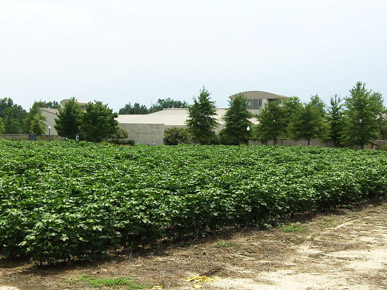 Crops Growing at Cullars Rotation
Crops Growing at Cullars Rotation- Rock phosphate was added to the soil
- There was no potassium added
- Two-thirds of the potassium was added to the soil
- No lime was added to the soil
- No Sulfur was added to the soil
- The soil had all the complete nutrients, as well as the micro-nutrients
- One-third of the regular amount of potassium was added to the soil
The Cullars Rotation was designed specifically to study the long-term effects that these various fertilizer compounds had on the crops.
The compounds that were used were potassium, phosphorus, and nitrogen, as well as lime and other micro-nutrients.
These tests were all on three-year rotations, and again included cotton, corn, as well as small grains.
The small grains were oats and wheat, as well as summer legumes that included soybeans, cow peas, and crotalaria.
The fields that were part of the testing were never irrigated and were forced to rely on strictly rainfall and natural soil moisture.
There were originally eleven plots set up for testing, and each one was given three treatments, one for each of the three major crops.
It is very interesting to note that plots that have been farmed near this test area that have not been given treatments, have not fared as well.
In fact, they are considered to be some of the most nutrient “robbed or poor” soil in the entire country.
The Cullars Rotation is continually documenting the long-term trends on these none irrigated crop yields, as well as the soil changes.
These tests to this day, provide extremely viable information as a teaching tool for stable and non-stable growing environments.
References
http://www.encyclopediaofalabama.org/article/h-3523

Alabama Gift Store
Numerous Items for You and Your Family to Enjoy
See it here at the Gift Store
Copyright 2019-2023 Alabamabackroads.com
All Rights Reserved
